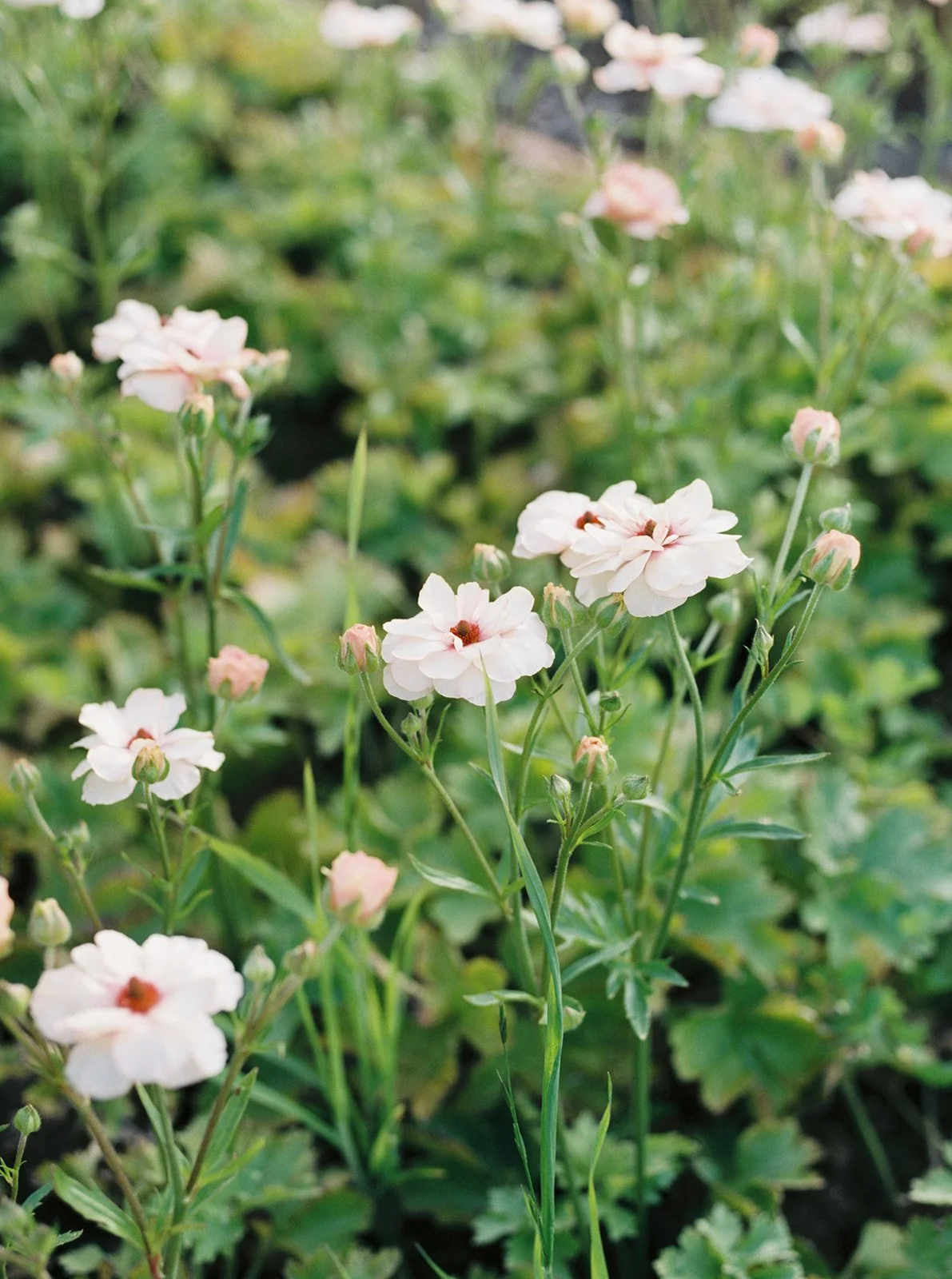On Growing What You Love
Butterfly Ranunculus “Ariadne”
I have an unpopular opinion when it comes to my crop planning. I only grow what I love. Most flower farmers will share objectively wiser advice: grow things that turn a profit, a high productivity to labor ratio, and are in high demand for your market. I agree with all of these things, but with the added requirement that I must actually love the flower. I have to look forward to it all winter, enjoy looking back on photos of it, joyfully tend to its weeding as it grows in the field, marvel at it as I am harvesting, and feel giddy when I get to design with it or pass it along to a lucky designer. Because really, at the end of the day, if joy and love aren’t driving this farm, we’ve lost the plot.
My first season of flower farming, I chose high yield varieties that were highly productive and easy to grow. This gave me a sense of accomplishment and success, but after cutting stem after stem of yellow sunflowers, for example, I got burned out on them pretty quickly. I started neglecting them, missed my succession times “accidentally”, and soon I was looking at a row of blooming, wasted flowers. For sunflowers in particular, I realized I loved having them in the field to gaze at and give some vertical interest, but the process of harvesting them was utterly annoying to me. I know so many flower farmers that will think I’m weird, but I just didn’t love harvesting them! They had a tendency to topple over in the car, could only be bunched in 5 stems, sowed by the hundreds each week to keep up a steady supply, and had to be harvested when mostly closed in order to have the best vase life. To me, it was a LOT of work for one stem, when I was watching other varieties happily pump out blooms for weeks without putting me on a hamster wheel of succession planting.
Since that first season, I’ve slowly collected varieties that I truly love growing. I described to a friend the other day that I want to think of my growing space less as a space of productivity and more as a habitat that I can steward. This means choosing varieties that have certain qualities that I consider all stars: they aren’t taxing the soil (lookin at you, sunflowers!), are getting better season after season, helping prevent soil erosion in the summer, able to handle heat or drought, provide food in the off season, or self sow to keep a steady stream of their happy selves going. If you want to check out that list, click here.

